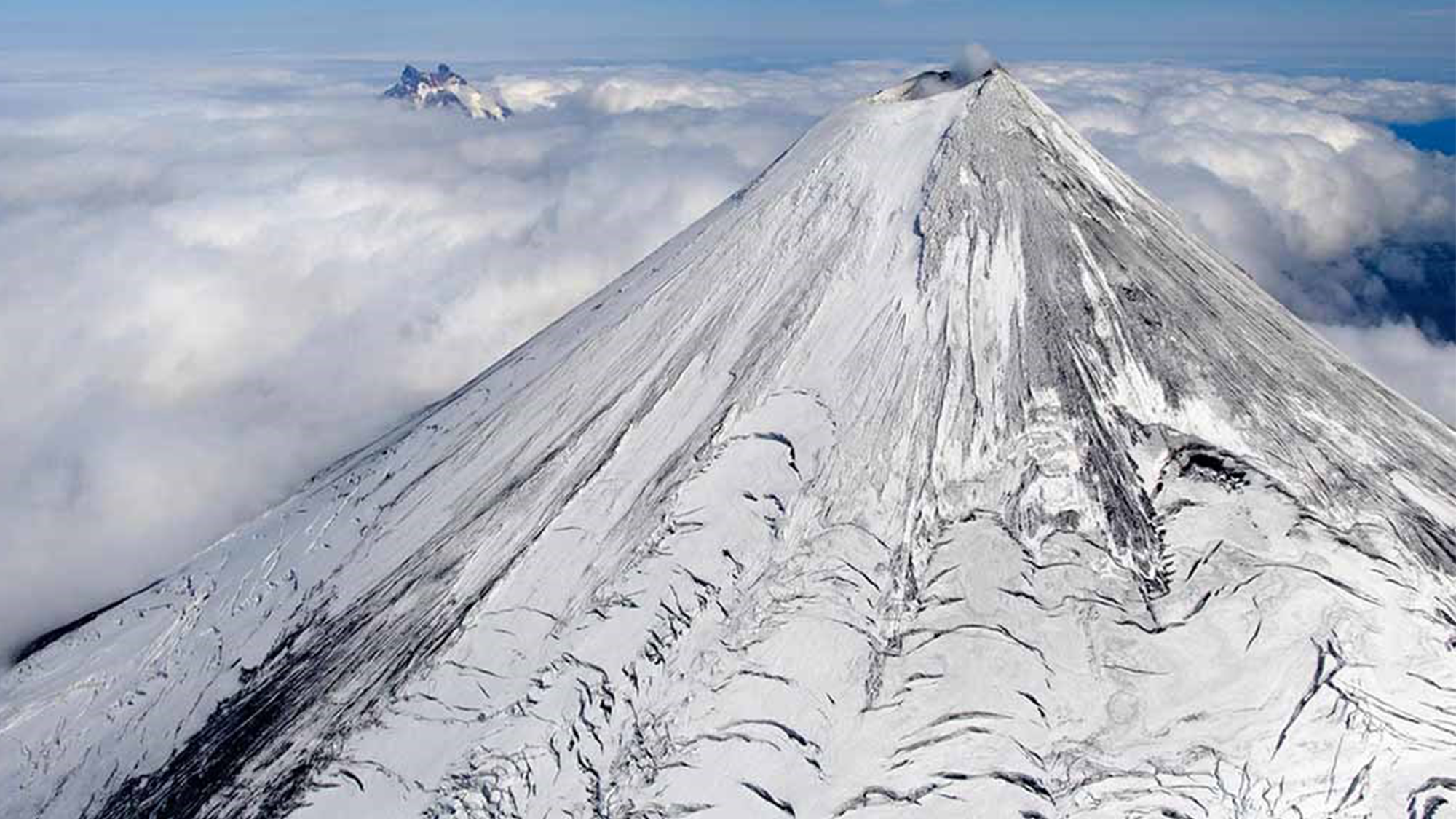

On Tuesday July 18, an ongoing volcanic eruption in Alaska’s Aleutian Islands produced a large ash cloud that prompted National Weather Service warnings to pilots regarding potentially dangerous conditions. Volcanic ash can cause a jet engine to shut down due to the spray’s angular and sharp texture.
[Related: Geologists: We’re not ready for volcanoes.]
The Alaska Volcano Observatory said the ash cloud was initially about 5.5 miles high and was reported following an eruption of the Shishaldin Volcano. Ash emissions fell below 1.9 miles by the afternoon, and the alert for pilots was downgraded. As of Wednesday morning Eastern time, the volcano is at an orange alert level.
Mount Shishaldin began erupting on July 11, with a US Coast Guard flight confirming increased lava eruptions within the summit crater, according to reporting from the Associated Press. On Friday July 14, a significant explosion produced an ash cloud that hit up to 7.5 miles high that drifted south towards the Pacific Ocean preceding a second smaller explosion.
The volcano is about 700 miles southwest of the city of Anchorage and towards the center of Unimak Island. The island is home to roughly 65 residents who live in the community of False Pass, about 25 miles northeast of the volcano.
Mt. Shishaldin is one of the most active volcanoes in the Aleutian Arc, a 1,553 mile long line of 80 volcanic mountains with 41 that have been active since at least 1760. The arc stretches along the southern end of the Bering Sea onto the Alaskan Peninsula and is the boundary between the Pacific and North American tectonic plates.
The symmetric cone volcano has a base diameter of 10 miles and a 660-foot funnel-shaped crater that often emits steam and the occasional bit of ash. Mt. Shishaldin has erupted at least 26 times since 1824. Most of these eruptions have been small, with one in 1999 producing an ash cloud that reached 8.5 miles.
[Related: How scientists helped Alaska’s “Rat Island” shake off its namesake rodents.]
According to the US Army Corps of Engineers, volcanoes have been both constructive and destructive influences on the Aleutian Arc. The eruptions have helped create islands through ash and fresh lava flows, but have also destroyed islands. The island of Bogoslof in the eastern side of the Aleutians is one that has seen rapid construction and destruction that has influenced its shape over time.
The Centers for Disease Control and Prevention (CDC) encourages those living in the face of any active volcano to evacuate if told to, shelter in place by sealing all doors and windows, and maintain a disaster supply kit.
